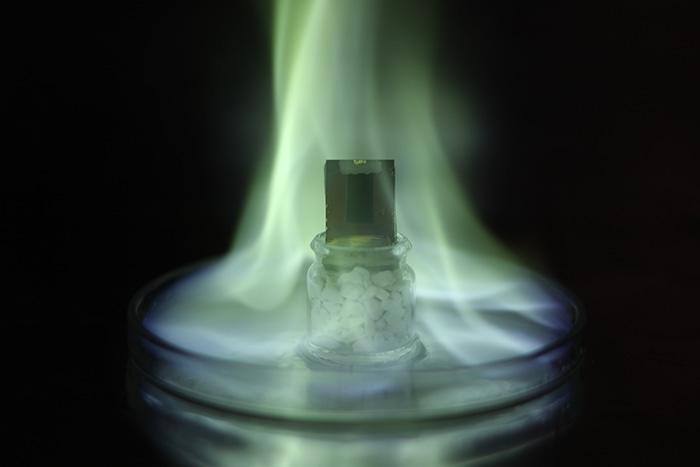Mar 20 2017
 Illustration of a perovskite solar cell. CREDIT: Photo by Aalto University/University of Uppsala/EPFL.
Illustration of a perovskite solar cell. CREDIT: Photo by Aalto University/University of Uppsala/EPFL.
Five years ago, there was a widespread discussion worldwide regarding third-generation solar cells that challenge conventional silicon cells due to a simple and inexpensive manufacturing process that required lesser energy.
Methylammonium lead iodide is one such metal-organic material with the perovskite crystal structure that efficiently absorbs light and is a good conductor of electricity, where both properties are highly significant for solar cells. Yet, the working life of solar cells fabricated from metal-organic perovskites has been found to be much less compared to cells fabricated using silicon.
Currently, scientists from Aalto University, Uppsala University and École polytechnique fédérale de Lausanne (EPFL) in Switzerland have employed “random network” nanotube films - created under the guidance of Professor Esko Kauppinen at Aalto University - to enhance the long-term stability of solar cells fabricated from perovskite. Random network nanotube films are those that comprise of single-walled carbon nanotubes that resemble spaghetti on a plate when viewed in an electron microscope image.
In a traditional perovskite solar cell, the hole conductor layer consists of organic material and, on top of it, a thin layer of gold that easily starts to disintegrate and diffuse through the whole solar cell structure. We replaced the gold and also part of the organic material with films made of carbon nanotubes and achieved good cell stability in 60 degrees and full one sun illumination conditions.
Kerttu Aitola, Researcher Uppsala University
In this research, the researchers used thick black films with the highest possible conductivity at the back contact of the solar cell through which light does not pass. Aitola stated that the nanotube films can be made further thin and transparent, thus enabling them to be used as the front contact of the cell, that is, the contact that allows light to pass through.
“The solar cells were prepared in Uppsala and the long-term stability measurement was carried out at EPFL. The leader of the solar cell group at EPFL is Professor Michael Grätzel, who was awarded the Millennium Prize 2010 for dye-sensitised solar cells, on which the perovskite solar cells are also partly based on’, noted Aitola.
Solar Cells in Windows
The lifespan of solar cells fabricated using silicon is 20 to 30 years, and their industrial production is highly efficient. Yet, there is a constant search for substitutes because the process of reducing silicon dioxide in sand to silicon requires an increased amount of energy. According to estimates, a silicon solar cell takes nearly 2 or 3 years to produce the energy used to fabricate it. In contrast, a perovskite solar cell requires just 2 or 3 months to produce it.
In addition, the silicon used in solar cells must be extremely pure. Perovskite solar cell is also interesting because its efficiency, in other words how efficiently it converts sunlight energy into electrical energy, has very quickly reached the level of silicon solar cells. That is why so much research is conducted on perovskite solar cells globally.
Kerttu Aitola, Researcher Uppsala University
The substitute solar cells prove to be more fascinating as they can be used in a range of application areas. Until now, flexible solar cells have been fabricated on conductive plastic. As against the conductive layer of plastic, the nanotube films have superior flexibility and the raw materials are inexpensive. The flexibility of the solar cells enables them to be fabricated by means of the roll-to-roll processing technique used in the paper industry.
‘Light and flexible solar cells would be easy to integrate in buildings and you could also hang them in windows by yourself’, stated Aitola.